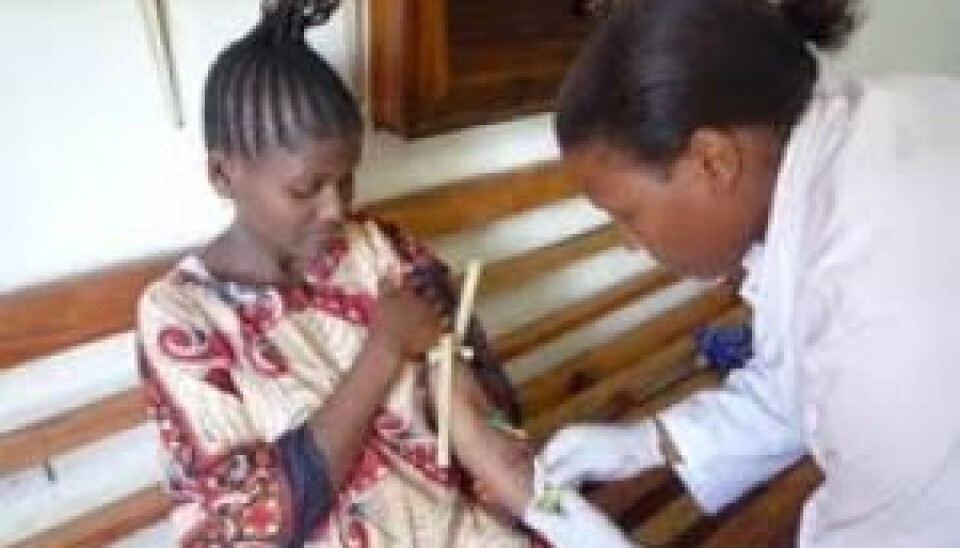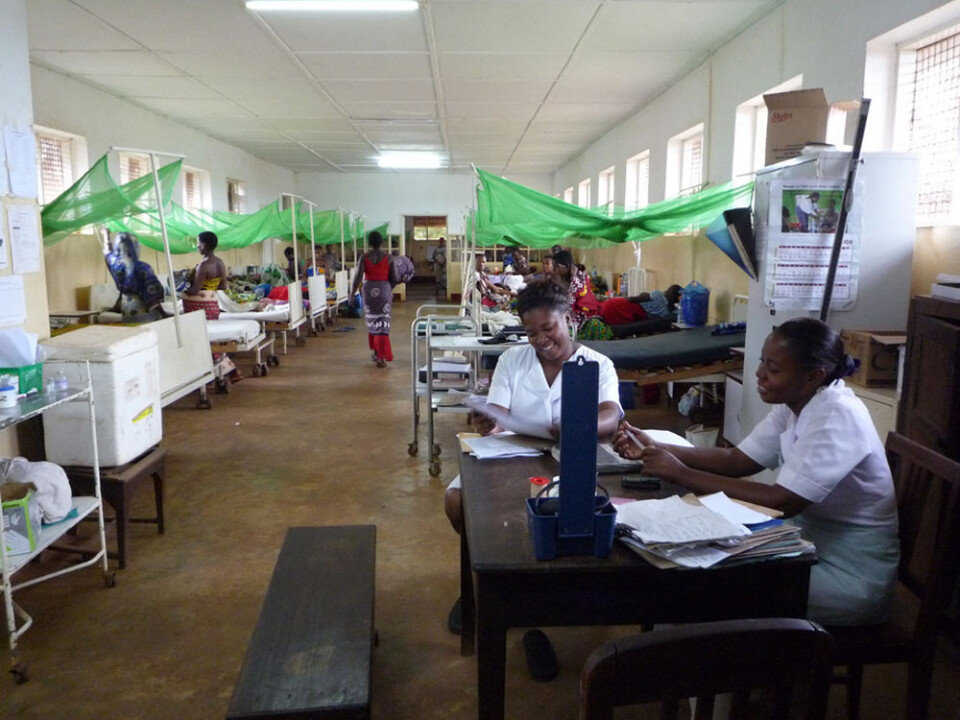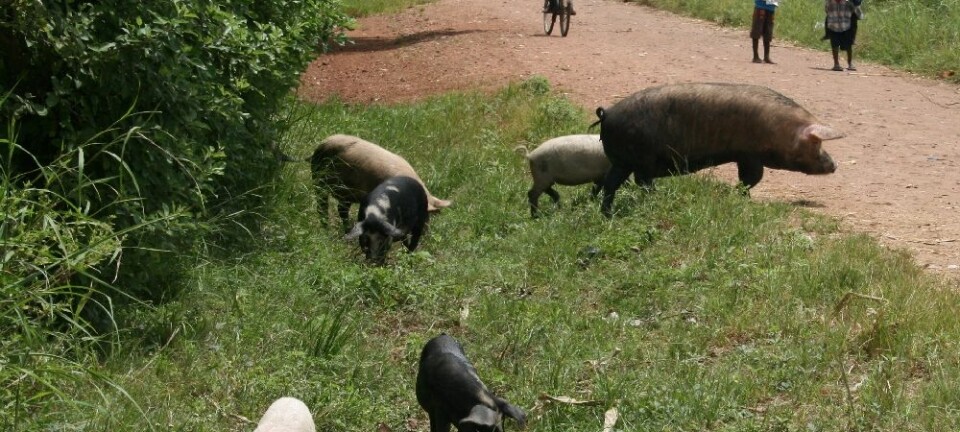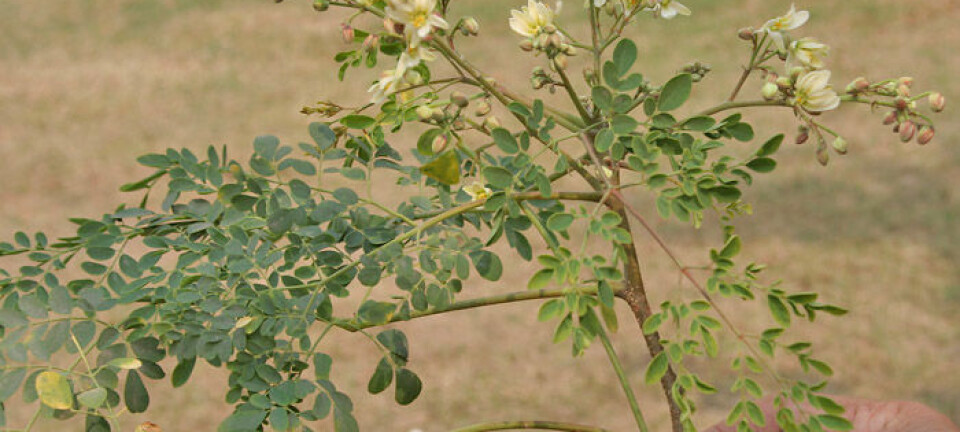
Malaria vaccine offers hope for women in Africa
A team of medical parasitologists has reconstructed a vital part of a malaria protein. The breakthrough has led to a promising prototype vaccine for maternal malaria.
In Africa, malaria during pregnancy causes the death of around 200,000 new-borns and about 10,000 pregnant women every year.
But there is fresh hope in the battle against maternal malaria, thanks to Associate Professor Ali Salanti and his co-workers at the Centre for Medical Parasitology at the University of Copenhagen. They have just achieved a major breakthrough in their work to develop a specific vaccine against the parasite-mediated disease.
Protecting the placenta
The research team has identified the specific part of the malaria protein VAR2CSA that binds to placental tissue. They have also demonstrated that this tiny part of the protein can trigger the formation of antibodies which prevent the parasite from binding to placental tissue. In addition they have shown that antibodies can be made in sufficiently large quantities for use in a vaccine.
Their findings have been published in the Journal of Biological Chemistry.

“This disease is one of the biggest health threats to the African population,” says Salanti. “It is a huge problem for the woman and her unborn child, and if there is one thing you don't need in Africa it is a bad start to life. That is why we are dedicated to this project.”
An adaptable organism
The breakthrough is a considerable achievement since it is difficult to develop a malaria vaccine. The parasite which causes malaria is a highly adaptable organism, which has developed effective weapons to fool the host's defences.
The host's spleen removes malaria-infected blood cells, but the parasite has developed a way of protecting itself against removal by equipping itself with small ’hooks’ that can bind to either brain, lung or placental tissue.
The 'hook' that binds to the placenta is located on the VAR2CSA protein, and the aim of the research is to develop a vaccine for this protein. But it has proved to be a difficult task. VAR2CSA is a large and complex protein, and for technical reasons it is impossible to make it in sufficient amounts to produce a vaccine.
Promising results from lab research
The trick has therefore been to identify small fragments of the malaria protein that are crucial to binding, as a basis for developing a vaccine that can be produced in large enough quantities to give women the necessary protection.
“The hook has lots of sub-segments, and we have discovered which part of the hook needs to be blocked to effectively prevent the binding between the parasite and the placenta,” says Salanti.
The research team used the protein fragment to develop a specific vaccine prototype, which was tested in the laboratory with promising results.
Raising antibodies in animals
Salanti's team injected the protein into animals to generate an immune response in the form of antibodies, which were extracted and purified.
The antibodies were then taken to Africa for laboratory tests, where they were mixed with malaria parasites and placental tissue extracts from mothers who had just given birth. The extracts contained placental receptors to which the parasites normally bind.
“Our tests showed that the antibodies raised by the vaccine in animals were able to prevent the malaria parasite from binding to placental receptors,” he says.
Testing in humans
The tests were so convincing that two Danish biotech companies, ExpreS2ion Biotechnologies and CMC Biologics, have entered a collaboration with the research group to optimise vaccine production and test whether it has side effects in animals. If the results are favourable, the vaccine will then be clinically tested in humans.
Assuming all goes well, African women will be able to benefit from the new vaccine within ten years.
Translated by: Nigel Mander
Scientific links
- The chondroitin sulfate A-binding site of the VAR2CSA protein involves multiple N-terminal domains
- Selective upregulation of a single distinctly structured var gene in chondroitin sulphate A-adhering Plasmodium falciparum involved in pregnancy-associated malaria
- Evidence for the involvement of VAR2CSA in pregnancy-associated malaria










